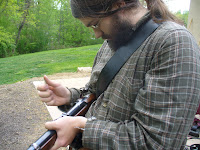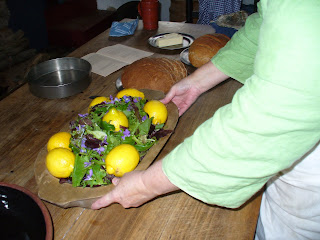There will be a Civil War reenactment at Neshaminy Park in Bensalem, PA this Saturday and Sunday. It is open to the public for free. It starts at 9 and ends at 4. The park is really lovely, there will be a large encampment and battle right along the waterfront. The weather is supposed to be very nice. Don't miss a grand opportunity to see the Civil War come to life. Rugged soldiers, fair belles, cannon and a nice day. It doesn't get any better. :D
This is a very fun event for us, even though the water makes it cold at night. We are so excited and can't wait to start the reenacting season off. Our reenacting company got together over the weekend to clean the rifles and to get all of our gear together. Andy got a brush stuck in his rifle, which he had to shoot out. It is always interesting to see something live-fired as we normally never actually shoot a real object out of the rifles.
The gun I cleaned was very rusty. I don't think I got enough of it off. I scrubbed a ton and it still wouldn't come off. I guess it will just stay a rusty rifle. I am really very excited to go. I have gotten my petticoats and dress and corset out of winter storage and have dusted off my shoes. I can't wait to sleep with the crisp night air, the smell of camp fire and the chirps of crickets. It is so relaxing and enjoyable. Hope to see some of you there!
Here are some pictures from the 2009 Neshaminy Reenactment. Look how scenic!
This is a very fun event for us, even though the water makes it cold at night. We are so excited and can't wait to start the reenacting season off. Our reenacting company got together over the weekend to clean the rifles and to get all of our gear together. Andy got a brush stuck in his rifle, which he had to shoot out. It is always interesting to see something live-fired as we normally never actually shoot a real object out of the rifles.
The gun I cleaned was very rusty. I don't think I got enough of it off. I scrubbed a ton and it still wouldn't come off. I guess it will just stay a rusty rifle. I am really very excited to go. I have gotten my petticoats and dress and corset out of winter storage and have dusted off my shoes. I can't wait to sleep with the crisp night air, the smell of camp fire and the chirps of crickets. It is so relaxing and enjoyable. Hope to see some of you there!
Here are some pictures from the 2009 Neshaminy Reenactment. Look how scenic!




































